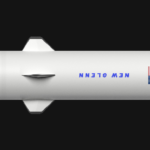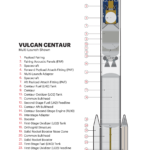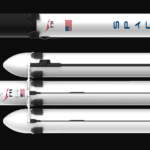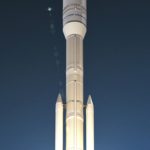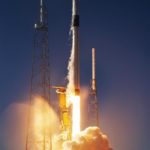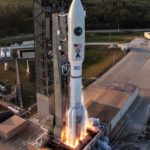SpaceX
DeepSpace: A critical juncture for SpaceX, Blue Origin, ULA, other players

This is a free preview of DeepSpace, Teslarati’s new member-only weekly newsletter. Each week, I’ll be taking a deep-dive into the most exciting developments in commercial space, from satellites and rockets to everything in between. Sign up for Teslarati’s newsletters here to receive a preview of our membership program.
A high-pressure competition between all four major US launch providers – SpaceX, ULA, Blue Origin, and Orbital ATK (now NGIS) – is about to head into its most critical stage, a period of 60 days allotted for interested parties to submit their completed proposals. According to the US Air Force (USAF), the final request for proposals (RFP) could come as early as March 29th, giving the four aforementioned companies until May 28th to complete their proposals.
All things considered, the growing pressure and some of the USAF’s strategy behind the program – known as Launch Service Procurement (LSP) Phase 2 – has raised significant questions that remain largely unanswered and lead to a few mild bouts of strife or unhappiness from contract competitors. Most notably, Blue Origin – having just won a USAF development contract worth $500M – has repeatedly requested that the USAF and Department of Defense (DoD) delay the RFP and contract awards until 2021, according to Space News’ Sandra Erwin. Meanwhile, a lack of clarification from the USAF means that it’s unclear whether the strategy behind launch contract awards (LSP) will end up contradicting or undermining a partially connected development program known as Launch Service Agreements (LSA) that saw the USAF award ~$2B to three providers (excluding SpaceX) between 2018 and 2024.
Battle of the Acronyms: LSP vs. LSA
- Recently rebranded by the US military as the National Security Space Launch (NSSL) program, LSP Phase 1 and 2 and LSA are the latest major procurement initiatives begun under the Evolved Expendable Launch Vehicle (EELV) program, spun up in the 1990s to provide a firmer foundation for the commercial launch of military spacecraft after the 1986 Shuttle Challenger disaster pushed most satellites off of the platform.
- Phase 2 of the EELV program has been ongoing for several years and will culminate with the procurement of 25+ launch contracts (LSP) from two providers no earlier than 2020. The USAF’s Launch Service Agreements are also a major strategic feature of Phase 2, nominally seeing the military branch contribute major funding to assist in the development of three separate launch vehicles (New Glenn, Vulcan, and Omega) with the intention of ultimately certifying those rockets for EELV (now NSSL) launches.
- LSA also saw the USAF award several tens of millions to SpaceX, Blue Origin, and Aerojet Rocketdyne to develop capabilities centered around advanced, new rocket engines (BE-4, AR-1, and Raptor), but the latest phase of LSA is valued at least several times higher than its earlier engine-specific awards.
-
- Oddly, the purpose of LSA was – at least on the cover – to effectively ensure that the Air Force had multiple (more than two) providers and thus preserve a healthy, competitive military launch market. A senior leader specifically stated that “the goal of [LSA] is to make sure [the US military has] a competitive industrial base.”
- Aside from an initial $181M awarded to Blue Origin, ULA, and Orbital ATK (now Northrop Grumman Innovation Systems, NGIS) in 2018 and 2019, the remaining funding – up to $320M for Blue Origin’s New Glenn, $610M for NGIS’ Omega, and $785M for ULA’s Vulcan – would be dispersed to each provider between 2020 and 2024.
- However, an odd and controversial bit of language behind the coming five-year launch services procurement (LSP) initiative would completely cut off funding to LSA awardees in the event that they fail to be awarded launches from the latest LSP.
- Additionally, the LSP awards are strictly meant – apparently very intentionally – to be distrubuted among two launch providers, despite a minimum at least four being able (SpaceX) or required (ULA, Blue, NGIS) to enter a bid.
- In other words, this guarantees that either one or two of the three LSA awardees would have the vast majority of their supposedly awarded development funding cut off after FY2020, four years early.
- Oddly, the purpose of LSA was – at least on the cover – to effectively ensure that the Air Force had multiple (more than two) providers and thus preserve a healthy, competitive military launch market. A senior leader specifically stated that “the goal of [LSA] is to make sure [the US military has] a competitive industrial base.”
- Despite continued protests from a number of stakeholders, the USAF has refused to budge from its decision to simultaneously A) create a duopoly, B) defeat the purpose of LSA awards, and C) mass-award ~25 launch contracts to two providers in 2020, anywhere from 12-24 months prior to the planned inaugural launches of all three LSA-funded rockets.
- Without cost-sharing development funds from the USAF and a chance of winning more than a handful of US military launch contracts between now and the late 2020s, it can be all but guaranteed that an LSA funding cutoff will either indefinitely pause or slow to a crawl a given provider’s development of their proposed launch vehicle.

A rocket and a hard place
- This sticky situation thus offers up a few potential ways that this badly-designed (or entirely dishonest) military launch development and procurement strategy will end up by the end of 2020. One way or another, the current strategy as it stands will end up providing two (or one, given that SpaceX will not receive LSA funding) companies with several years of development funding and at least five years of bountiful, guaranteed launch contracts.
- The four providers and two LSP slots available offer a set range of possible alternate realities, limited by political barriers that would, say, almost invariably prevent the USAF from severely harming ULA by cutting off the vast majority of the company’s only real source of income for 5+ years.
- ULA and SpaceX win: This maintains the status quo, wholly invalidating the point of using LSA funds to ensure “a competitive industrial base.” NGIS likely cancels/freezes all Omega development with no chance of competing in commercial markets. Blue Origin owner Jeff Bezos could significantly delay New Glenn’s readiness for military missions if he fails to invest an additional $500M in infrastructure. Likeliest result: a marginally competitive duopoly.
- ULA wins, SpaceX loses: Having just certified Falcon 9 – and nearly Falcon Heavy – for high-value military launches and awarded SpaceX a total of 10 launch contracts (9 yet to be completed), the USAF could effectively spit in SpaceX’s face and award ULA and Blue Origin or NGIS LSP’s 25+ launch contracts.
- It’s hard to exaggerate just how much of a slight this would be perceived as by SpaceX and its executives, CEO Elon Musk in particular. The USAF would be risking the creation of a major political enemy, one which has already demonstrated a willingness to take the federal government to court and win. The USAF/DoD would effectively be hedging their bets against an assumption that SpaceX’s nine present military launch contracts will sate the company and ensure that SpaceX indefinitely remains a certified EELV/NSSL provider.
- In this eventuality, either Blue Origin or NGIS would lose LSA funding and the prospect of almost any military launch contracts until the late 2020s. For NGIS, this would likely kill Omega.
- At the end of the day, it’s sadly conceivable that the USAF/DoD may end up awarding LSP contracts to ULA (effectively a politically-forced hand) and NGIS, the latter assuring Omega’s survival. The military would thus be assuming that the political fallout created with SpaceX and Blue Origin would not be enough to severely harm their relationships, while also assuming that their much stronger commercial prospects and independent funding sources would ensure that each provider remains certified and willing to compete for future NSSL/EELV launches.
Regardless of what happens, the contradictory ways the USAF/DoD have structured their LSA and LSP programs seems bizarrely intent on creating major headaches and potential problems where that could easily be avoided with extraordinarily simple changes, namely removing the inexplicable cap and allowing three or more companies to win some of the ~25 LSP launch contracts).
Mission Updates
- The second launch of Falcon Heavy – the rocket’s commercial debut – is still scheduled to occur as early as April 7th.
- After Falcon Heavy, Cargo Dragon’s CRS-17 resupply mission is firmly scheduled for April (April 25th), while the first dedicated Starlink launch is now NET May 2019.
Photo of the Week:

SpaceX CEO Elon Musk offered a glimpse of a 1650 Kelvin (2500ºF/1400ºC) test of Starship’s metallic heat shield, simulating mid-range temperatures such a shield’s windward side might experience during an orbital-velocity reentry.(c. Elon Musk/SpaceX)

Elon Musk
Elon Musk gives nod to SpaceX’s massive, previously impossible feat
It was the booster’s 30th flight, a scenario that seemed impossible before SpaceX became a dominant force in spaceflight.
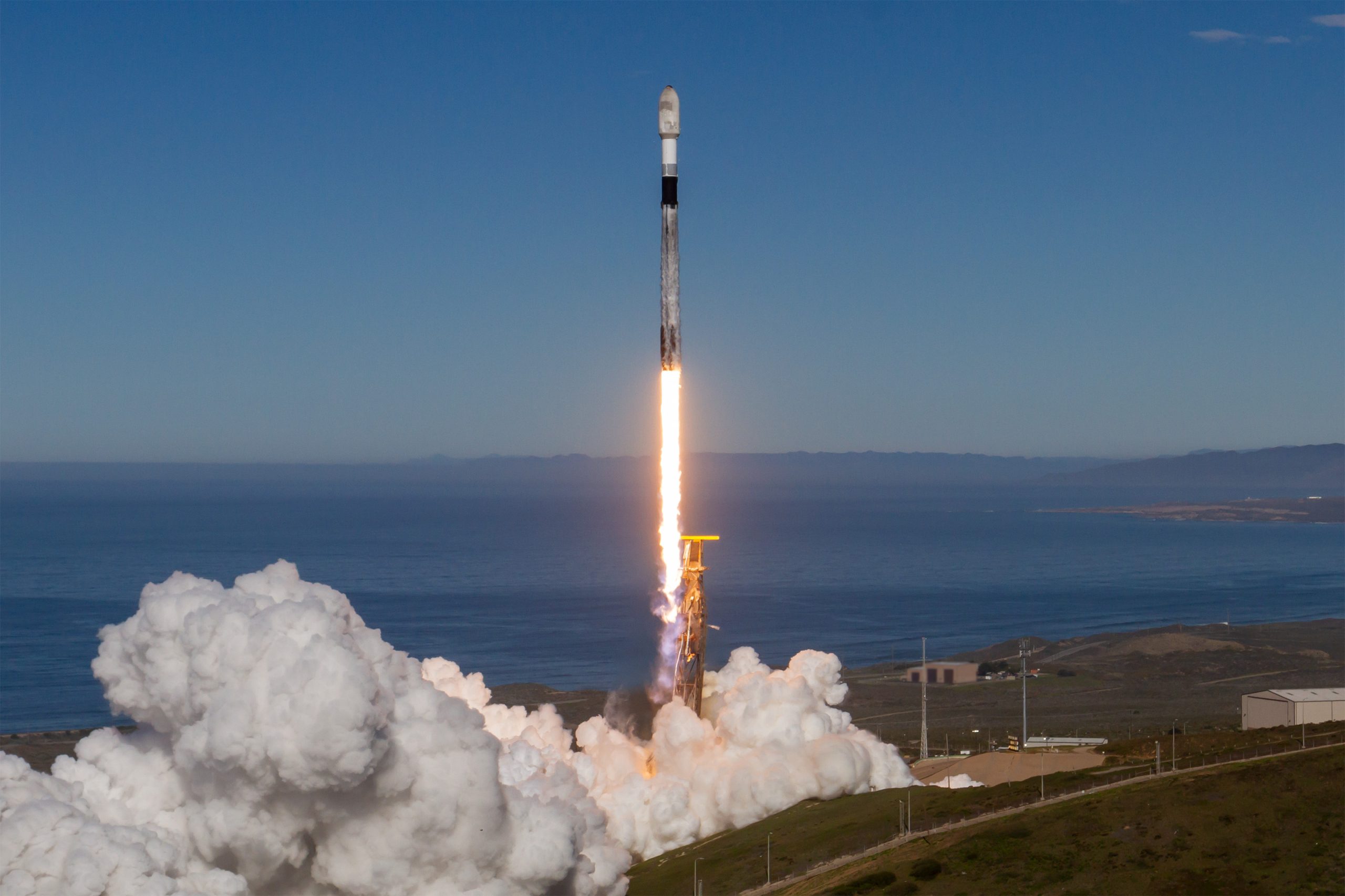
Elon Musk gave a nod to one of SpaceX’s most underrated feats today. Following the successful launch of the Transporter-15 mission, SpaceX seamlessly landed another Falcon 9 booster on a droneship in the middle of the ocean.
It was the booster’s 30th flight, a scenario that seemed impossible before SpaceX became a dominant force in spaceflight.
Elon Musk celebrates a veteran Falcon 9 booster’s feat
SpaceX completed another major milestone for its Smallsat Rideshare program on Friday, successfully launching and deploying 140 spacecraft aboard a Falcon 9 from Vandenberg Space Force Base. The mission, known as Transporter-15, lifted off two days later than planned after a scrub attributed to a ground systems issue, according to SpaceFlight Now. SpaceX confirmed that all payloads designed to separate from the rocket were deployed as planned.
The Falcon 9 used for this flight was booster B1071, one of SpaceX’s most heavily flown rockets. With its 30th mission completed, it becomes the second booster in SpaceX’s fleet to reach that milestone. B1071’s manifest includes five National Reconnaissance Office missions, NASA’s SWOT satellite, and several previous rideshare deployments, among others. Elon Musk celebrated the milestone on X, writing “30 flights of the same rocket!” in his post.
Skeptics once dismissed reusability as unfeasible
While rocket landings are routine for SpaceX today, that was not always the case. Industry veterans previously questioned whether reusable rockets could ever achieve meaningful cost savings or operational reliability, often citing the Space Shuttle’s partial reusability as evidence of failure.
In 2016, Orbital ATK’s Ben Goldberg argued during a panel that even if rockets could be reusable, they do not make a lot of sense. He took issue with Elon Musk’s claims at the time, Ars Technica reported, particularly when the SpaceX founder stated that fuel costs account for just a fraction of launch costs.
Goldberg noted that at most, studies showed only a 30% cost reduction for low-Earth orbit missions by using a reusable rocket. “You’re not going to get 100-fold. These numbers aren’t going to change by an order of magnitude. They’re just not. That’s the state of where we are today,” he said.
Former NASA official Dan Dumbacher, who oversaw the Space Launch System, expressed similar doubts in 2014, implying that if NASA couldn’t make full reusability viable, private firms like SpaceX faced steep odds.
Elon Musk
SpaceX’s Starship program is already bouncing back from Booster 18 fiasco
Just over a week since Booster 18 met its untimely end, SpaceX is now busy stacking Booster 19, and at a very rapid pace, too.
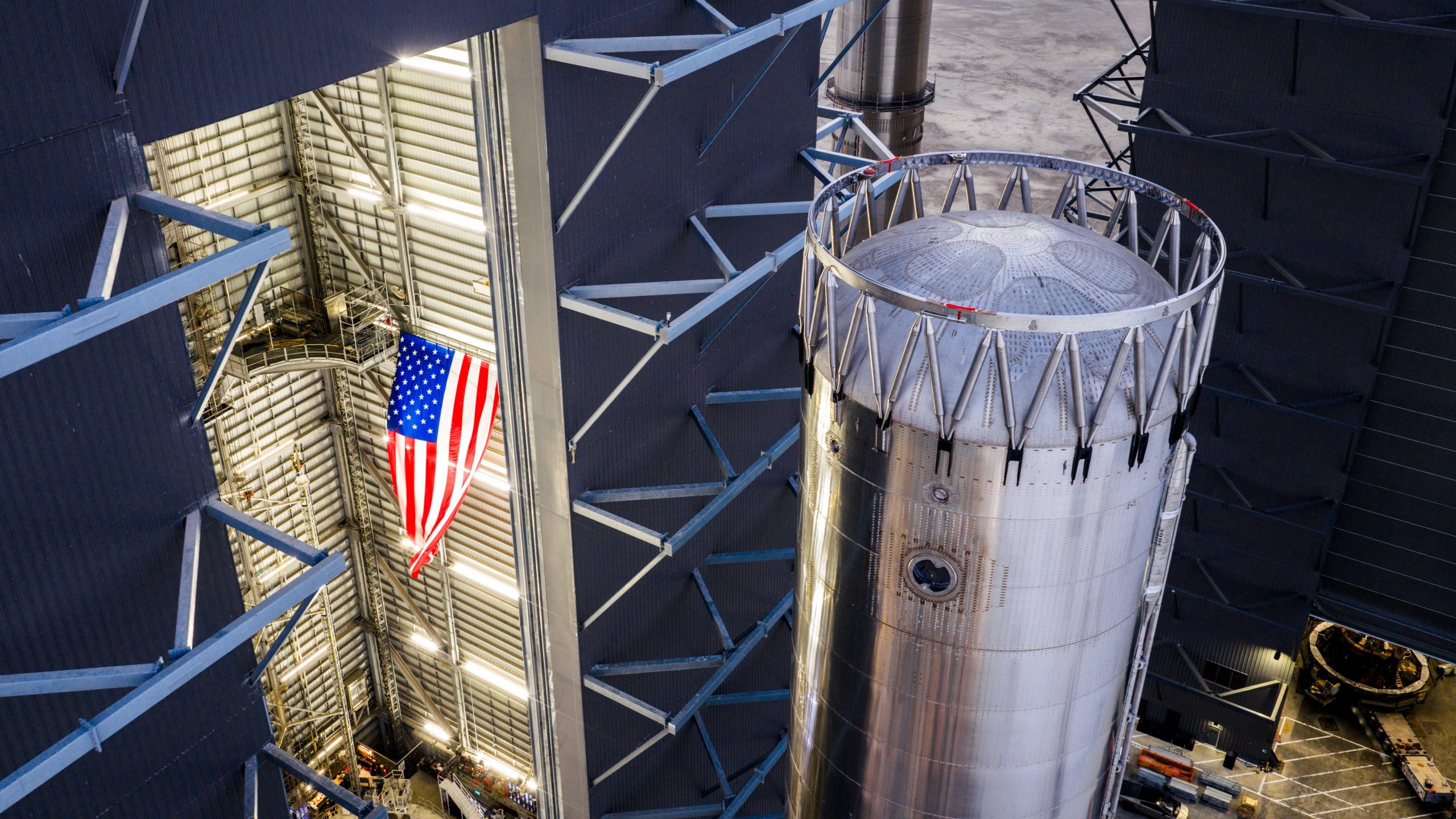
SpaceX is already bouncing back from the fiasco that it experienced during Starship Booster 18’s initial tests earlier this month.
Just over a week since Booster 18 met its untimely end, SpaceX is now busy stacking Booster 19, and at a very rapid pace, too.
Starship V3 Booster 19 is rising
As per Starbase watchers on X, SpaceX rolled out the fourth aft section of Booster 19 to Starbase’s MegaBay this weekend, stacking it to reach 15 rings tall with just a few sections remaining. This marks the fastest booster assembly to date at four sections in five days. This is quite impressive, and it bodes well for SpaceX’s Starship V3 program, which is expected to be a notable step up from the V2 program, which was retired after a flawless Flight 11.
Starship watcher TankWatchers noted the tempo on X, stating, “During the night the A4 section of Booster 19 rolled out to the MegaBay. With 4 sections in just 5 days, this is shaping up to be the fastest booster stack ever.” Fellow Starbase watcher TestFlight echoed the same sentiments. “Booster 19 is now 15 rings tall, with 3 aft sections remaining!” the space enthusiast wrote.
Aggressive targets despite Booster 18 fiasco
SpaceX’s V3 program encountered a speed bump earlier this month when Booster 18, just one day after rolling out into the factory, experienced a major anomaly during gas system pressure testing at SpaceX’s Massey facility in Starbase, Texas. While no propellant was loaded, no engines were installed, and no one was injured in the incident, the unexpected end of Booster 18 sparked speculation that the Starship V3 program could face delays.
Despite the Booster 18 fiasco, however, SpaceX announced that “Starship’s twelfth flight test remains targeted for the first quarter of 2026.” Elon Musk shared a similar timeline on X earlier this year, with the CEO stating that “ V3 is a massive upgrade from the current V2 and should be through production and testing by end of year, with heavy flight activity next year.”
Considering that Booster 19 seems to be moving through its production phases quickly, perhaps SpaceX’s Q1 2026 target for Flight 12 might indeed be more than feasible.
Elon Musk
Elon Musk shares SpaceX’s directive that destroys a prevalent media narrative
Musk’s comments followed Starlink’s initiatives for people affected by severe flooding in Indonesia and Cyclone Ditwah in Sri Lanka.

Elon Musk recently shared SpaceX’s standing policy to offer free Starlink service during natural disasters worldwide, highlighting the company’s commitment to pursue aid over profit during times of need.
Musk’s comments followed Starlink’s initiatives for people affected by severe flooding in Indonesia and Cyclone Ditwah in Sri Lanka.
Starlink activates free service in Indonesia and Sri Lanka
Starlink recently announced free service for those impacted by severe flooding in Indonesia’s Sumatra region, partnering with the government to deploy terminals rapidly to the hardest-hit areas. The offer extends to new and existing customers through December, restoring connectivity in zones where traditional networks have failed due to infrastructure damage.
Musk quoted the post on X, writing, “SpaceX standard policy is to make Starlink free whenever there is a natural disaster somewhere in the world. It would not be right to profit from misfortune.”
Starlink extended the same relief to Sri Lanka amid Cyclone Ditwah, coordinating with local authorities for additional support. The cyclone battered the island nation with heavy rains and winds, disrupting communications for thousands. Free access also lasts until year-end, emphasizing Starlink’s role in bridging gaps during crises.
“For those affected by the severe flooding in Indonesia and Sri Lanka in the aftermath of Cyclone Ditwah, Starlink is providing free service to new and existing customers through the end of December 2025. We’re also working with the Indonesian government to rapidly deploy terminals and restore connectivity to the hardest-hit areas on Sumatra, as well as with the Sri Lankan government to provide additional assistance,” Starlink wrote in a post on its official website.
Musk’s companies routinely provide aid
Musk’s firms have a track record of providing critical support in crises, often without fanfare, challenging portrayals of him as a comic book villain intent on enriching himself on the backs of a suffering populace. In January 2024 alone, Tesla opened Superchargers for free in Japan’s Hokuriku region after a magnitude 7.6 earthquake killed at least 55 and injured hundreds.
Similar efforts include Starlink deployments for the 2023 Maui wildfires, 2024 Hurricane Helene in North Carolina, and floods in Texas, where the service was used to help facilitate emergency coordination. These actions, which total millions in waived fees and logistics, demonstrate a proactive ethos among Musk’s companies, with Musk noting in past interviews that such aid stems from engineering solutions over optics.
The initiatives also provide a direct rebuttal of Musk’s characterization on mainstream media, which tends to lean negatively. This has become much more notable in recent years as Musk adopted more conservative policies. These negative sentiments came to a head earlier this year when Tesla stores, vehicles, and even some owners, were attacked during waves of anti-Tesla protests.
